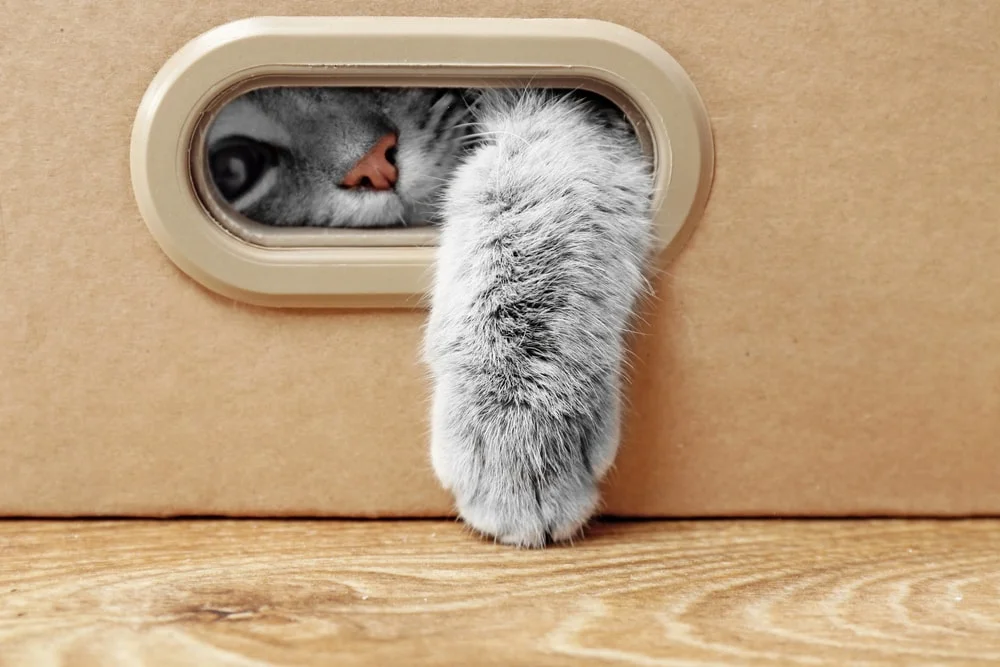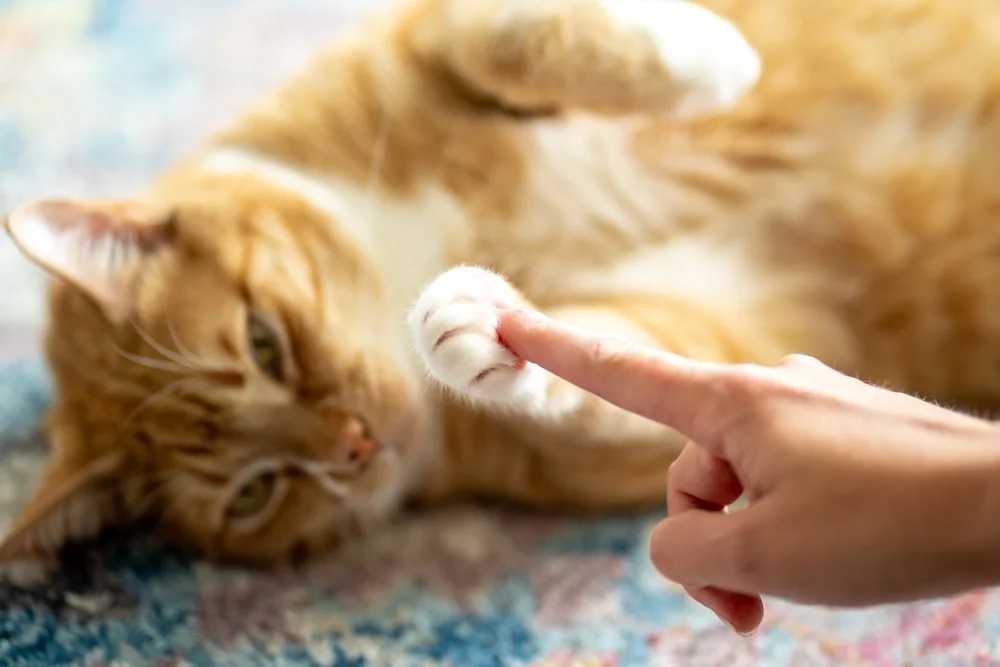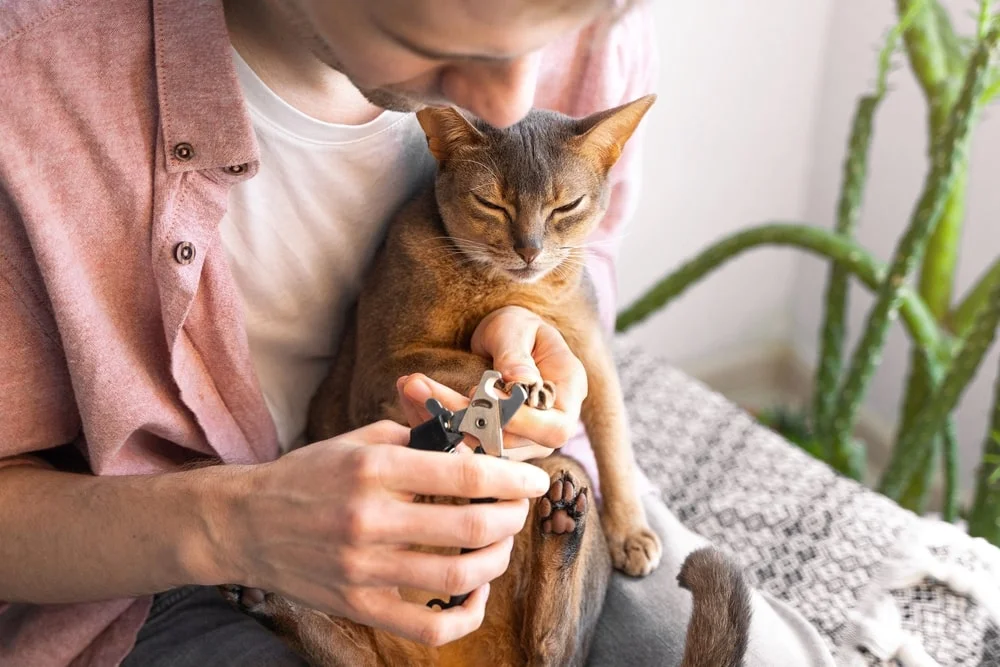PET HEALTH
Cat Paw Injury: What Do I Do?
Does your cat have a hurt paw? Cat paw injuries can range from mild to severe, with insect bites, broken paws, and muscle strains potentially to blame. No matter what’s going on, it’s important to get your cat to the vet so they can receive a proper diagnosis and treatment.
Here’s what you need to know about cat paw injuries and how you can help your kitty.
MetLife Pet Can Help You Protect Your Cat’s Paws
Cat Paw Injury Symptoms
If your cat hurts their paw, you might notice some of the following symptoms:2
- Limping
- Swelling
- Licking or biting the paw
- Irregular color
- Pain with touch
- Wounds
If your cat refuses to put weight on the leg and is displaying symptoms like crying, a decreased appetite, or visible bruising, this might indicate a broken or fractured paw. However, sometimes it may be difficult to tell when your cat is in pain — they may try to mask their pain or hide themselves.3 Taking the time to intentionally look for symptoms of a hurt paw can be especially important.
Causes of Cat Paw Injuries
Many things can cause your cat’s paw to become injured. Let’s take a look at some of them.
Trauma
If your cat's hurt paw is broken or fractured, it may have been caused by jumping from high up, falling, or blunt force trauma by an object. They could also get their paw caught in something that causes a fracture when they try to remove it. Strains and sprains can happen from jumping, climbing, intense play, or lacerations and can also cause pain for your cat.4
Foreign objects can cause cuts, scrapes, open wounds, or even become lodged in their paw, causing a cat paw pad injury. This can be especially relevant for outdoor cats, and if untreated, a wound may turn into an abscess.
Allergies
Your cat may also have seasonal, environmental, or food allergies that cause them to lick or bite at their paws due to irritation and inflammation.
Also, cats will often swat at or play with things that move. This may result in a sting or bite from a wasp, bee, spider, ant, or scorpion — which may cause an allergic reaction in your cat.
Nail issues
Nails that are too long can curl around your cat’s toe and grow into their paw pad. These ingrown toenails are often painful for your cat and can cause infection, swelling, or lameness if not taken care of. You can easily prevent this by having your cat’s nails trimmed regularly.
Cancer
The kinds of cancer in cats that might cause a hurt paw can include internal or external tumors — like squamous cell carcinoma (SCC), a type of skin cancer — or osteosarcoma, a type of bone cancer.
What To Do if Your Cat Hurt Their Paw
Is your cat showing injury symptoms? You can try to gently examine their paw for any visible damage. However, cats may not like or tolerate this — especially if they’re in pain. Here are some of the more specific things to look for in assessing your cat’s paw for damage:
- Fur loss or unusual fur texture
- Pads that look unhealthy or injured, not soft2
- Swollen toes or nail beds5
- Foreign objects or cuts2
- Nails that are broken, torn, or too long5
- Discharge or blood anywhere due to infection or wounds
If you’ve found the source of the injury, you may need to do a quick at-home treatment depending on the severity. For example, you might gently wrap the paw if there’s blood, discharge, or an open wound to get them to a vet, remove a stinger, clean fur, or cut nails. Having a pet first aid kit is helpful for this part.
It’s advised that you call your vet and ask for their recommendation — since you may unintentionally cause more harm by treating your cat yourself. This can be especially true if you’re trying to remove foreign objects, clean a wound with the wrong soap or disinfectant, or use topicals not meant for cats.
Cat Paw Injury Treatment
If you’ve chosen to take your cat to the vet, be as careful as possible getting them there. You don’t want to make the injury worse. Consider placing a soft blanket inside your cat’s carrier for them to lay on while in the car.
Your vet may examine the injured area and use X-rays to ensure there isn’t a break or fracture, ultrasounds for soft tissue injuries, or blood work to spot infection or other diseases. Once your vet has a better idea of what’s going on, they’ll recommend a course of treatment. This may involve wound care, casts or splints, topical ointments, rest, pain medication, and/or a cone collar so your cat can’t lick or chew their paw. Surgery might be required for severe injuries, fractures or breaks, or the removal of a tumor.
You’ll probably need to keep your cat still and comfortable for a few weeks to let the paw injury heal. A large dog crate might help with this. Treating paw injuries can be a challenge for active, curious cats with a mind of their own. But it’s essential to help your pet heal.
MetLife Pet Insurance Can Help Cover Injuries
You can try to prevent paw injuries by discouraging your cat from playing with bugs or jumping from high places (especially for kittens or senior cats). But sometimes, these things still happen. That’s why it’s important to be prepared with a pet insurance policy that can help cover vet bills for accidents and injuries.
MetLife Pet has helped many pets and their families with paw-related accidents — like Topher, a domestic shorthair kitten from California, who fractured his paw and lower leg when jumping from the hay loft in a barn. The vet bill totaled nearly $7,000, but Topher’s family got reimbursed over $5,300.6 Or Lexie, a curious 2-year-old cat from San Francisco, CA who cut her paw in multiple places while accidentally playing with something sharp. Her pet parents paid the vet bill of almost $500 and then were fully reimbursed.7 And finally, you have Barney, a kitten from Colorado who was treated for a soft tissue injury in his paw. His vet bill came to more than $275, but his pet parents were reimbursed over $225.8
Accidents can happen at any time. Our 0-day waiting period on accident coverage (and optional Preventive Care coverage) can help cover tomorrow’s accidents when you enroll your pet in a MetLife Pet cat insurance policy today.1 Take a few minutes to get your free quote now.




